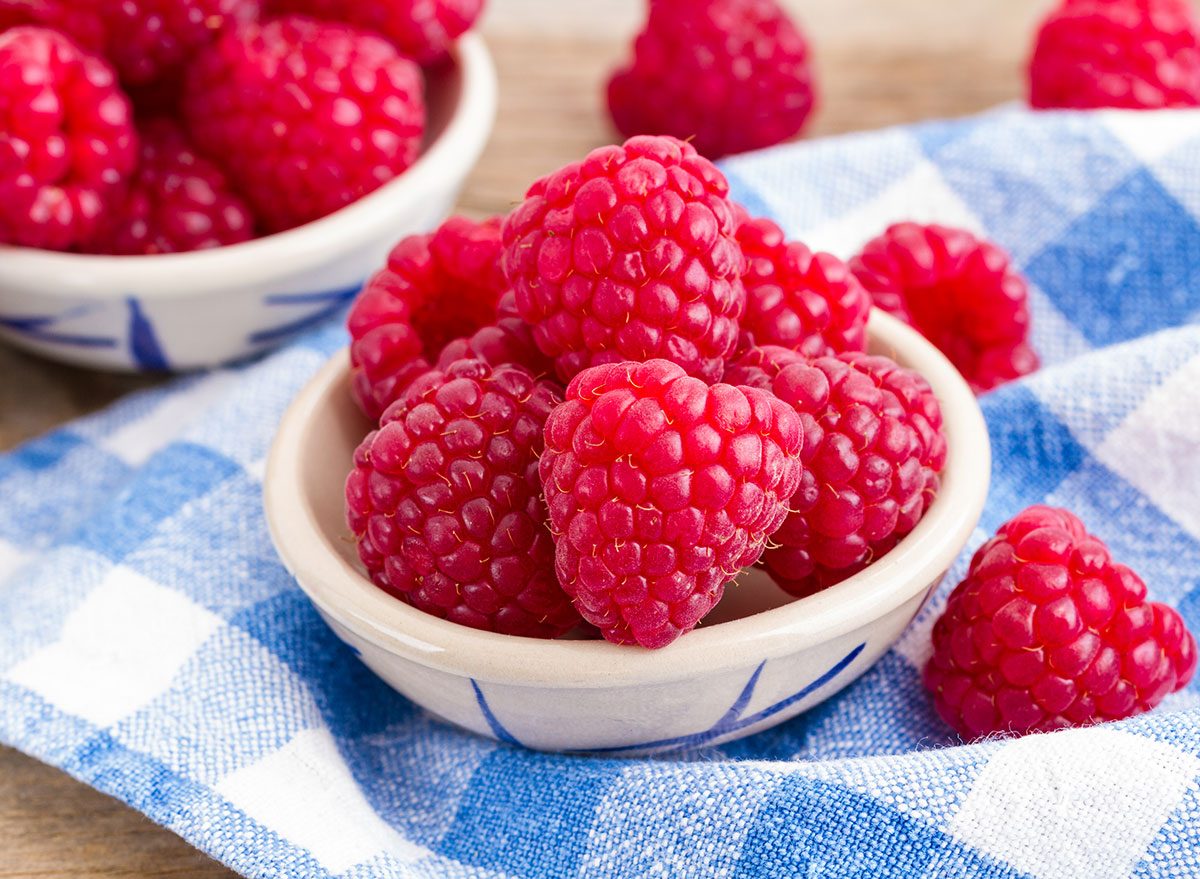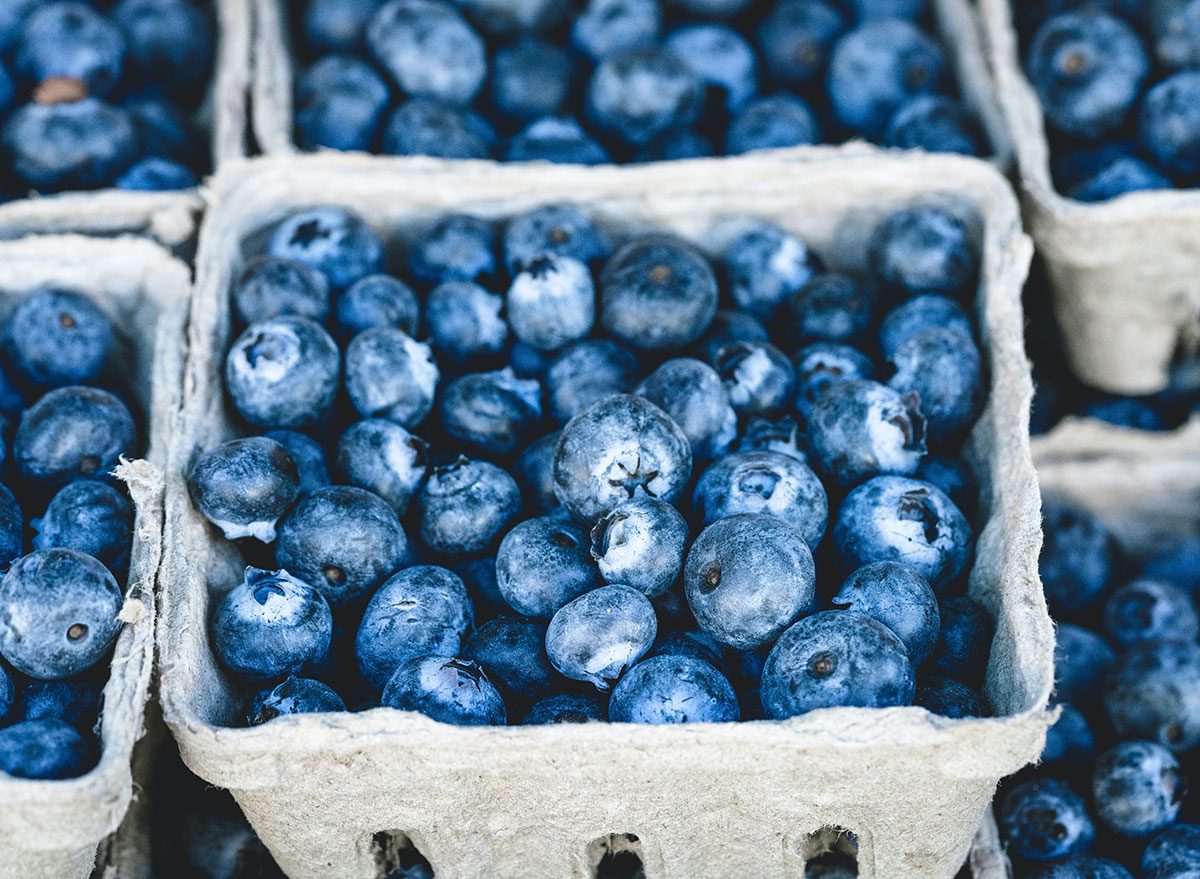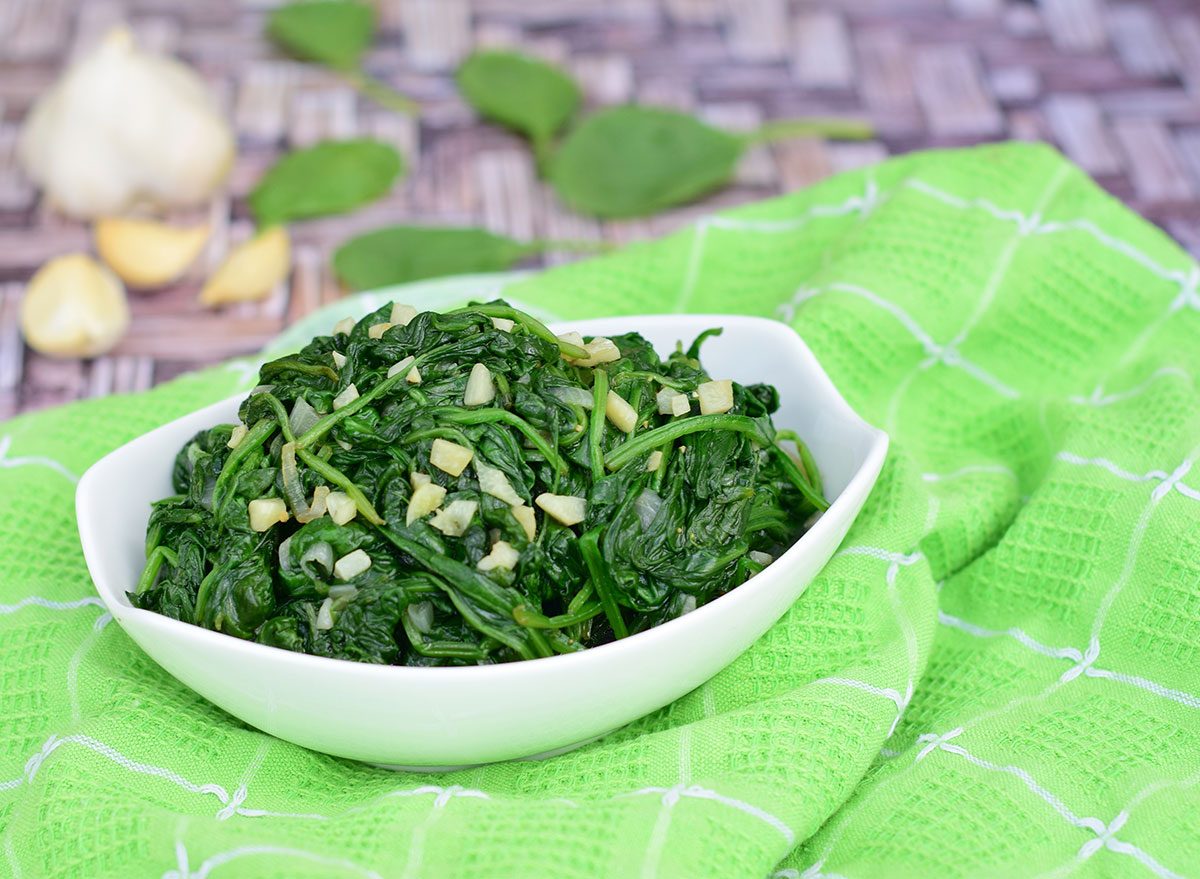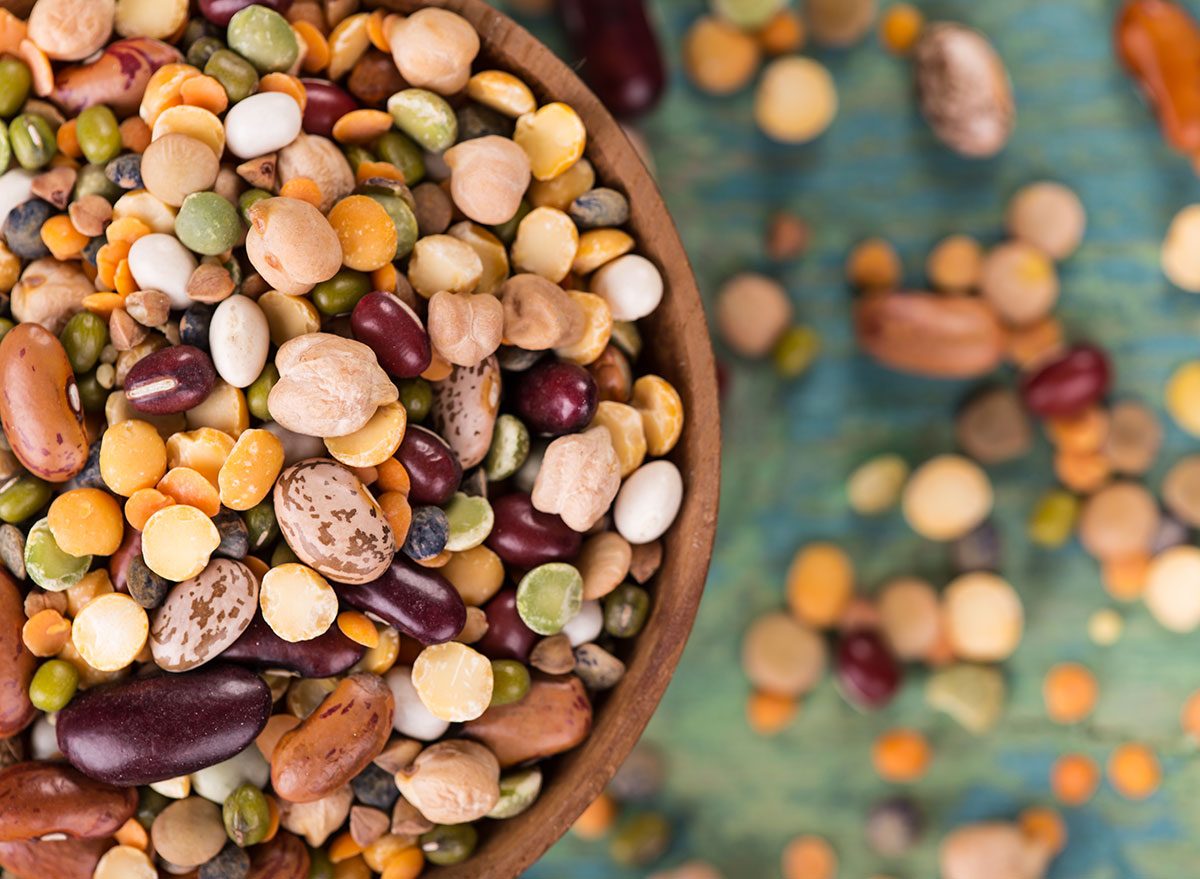The greatest food regimen if you may have endometriosis, in line with consultants
This year, celebrities like Mandy Moore and Chrissy Teigen opened up about their struggle with endometriosis. In light of more conversations that were opened about the disease, we consulted two healthcare professionals to get a better idea of what endometriosis is and which foods can help improve the symptoms. Although there is no cure for the common gynecological condition, some treatments – and yes, even foods – can help keep symptoms under control.
RELATED: These are foods to eat for a healthy vagina, according to a gynecologist
What is endometriosis?
Endometriosis is an often painful condition that occurs when the endometrium, or the membrane that leads to the uterus, grows outside the uterus.
“When you have endometriosis, the lining is peppered in other parts of your body, such as the ovaries, intestines and even the membrane,” says Christine Carlan Greves, MD, a board-certified obstetrician and gynecologist at Orlando Health Winnie Palmer Hospital for Women & Babies.
While the uterus sheds the endometrium every month when you are menstruating, other parts of your body cannot get rid of it. “This can result in pain in the body when a woman is menstruating,” says Greves.
Some women with endometriosis may also have heavy periods, pain during intercourse, discomfort when urinating or bowel movements or problems getting pregnant.
How is endometriosis diagnosed?
The gold standard for the diagnosis of endometriosis is a laparoscopy. This is a type of surgery that involves looking inside a woman’s pelvic area to see the endometriosis tissue. Doctors can even take a sample of the tissue to look at it under a microscope, according to Office on Women’s Health (OWH).
However, there are other ways to control endometriosis. Your doctor may perform a pelvic exam to look for large cysts or scars behind the uterus, or use an imaging test such as ultrasound or magnetic resonance imaging (MRI), according to the OWH.
Experts estimate that more than six million women in the United States currently live with endometriosis. The condition peaks between 25 and 35 years, but it also shows in girls and women after menopause, says Greves.
How long a woman lives with endometriosis before she is diagnosed can vary, however research suggests it can take a whopping eight years. One reason it can take so long is that many doctors normalize menstrual cramps, which means they can deduct your complaints as just part of your period.
If your OB / GYN does not take your pain seriously, it is important to find someone who does. “If you notice that something is happening to your body that you feel can improve you, do not hesitate to mention it to your doctor, because we are here to help,” says Greves.
Once you get a diagnosis, there are some treatment options to consider.
The easiest thing, as long as someone has no contraindications, is to take non-steroidal anti-inflammatory drugs [NSAIDs] “naproxen or ibuprofen two days before your period is expected to begin,” says Dr. Greves. tar [NSAIDs] before your period, it is as if you are prepared for the fight against pain, Greves explains.
You can also try hormonal birth control pills to stop the cycling process from happening in the first place. This can prevent the endometrium from causing problems, she adds.
If your symptoms are severe and hormones are not helping, surgery may be an option. The surgeon can remove any spots of endometriosis, and after that you can try hormone treatments again, according to National Institute of Child Health and Human Development (NICHD).
RELATED: What Your Diet Should Look Like If You Have Gestational Diabetes, According to an RD
What is the best diet for endometriosis?
Your diet can affect your endometriosis. “While more research is needed, evidence suggests that there are certain foods that can negatively affect the symptoms of endometriosis,” he said. Caroline Susie, RD, a registered dietitian who works with women.
For example, endometriosis tends to be more common in women who regularly eat trans fats, which are found in fried and processed foods. A study of more than 70,000 American nurses found that women who ate the most trans fat had a 48% higher risk of being diagnosed with endometriosis compared to those who ate the least. The reason may be that trans fats increase inflammatory markers that have been associated with endometriosis.
You may also want to limit your intake of alcohol and caffeine if you have endometriosis. Both promote inflammation in the body, which can aggravate pain, says Susie.
On the other hand, certain foods may be beneficial for women with endometriosis.
Although there is no official endometriosis diet, the Mediterranean diet is a good alternative because it contains foods that fight inflammation, says Susie. This diet focuses on high-fiber foods such as whole grains and vegetables; antioxidant-rich foods such as colorful fruits; healthy fats such as olive oil, salmon, nuts and seeds; and ferrous foods such as green leaves and beans.
According to Susie, these five foods can be especially helpful in taming the symptoms of endometriosis.
Salmon

Salmon is a fatty fish that is rich in omega-3 fatty acids. According to Harvard TH Chan School of Public Health, omega-3 is an important fat-which means your body cannot make them on its own and must get them from food-with anti-inflammatory abilities. Thanks to an abundance of omega-3, salmon can help reduce inflammation and pain, making it a smart addition to your diet if you have endometriosis.
Do not miss 4 health benefits of taking salmon oil, according to science.
Raspberry

Raspberries are an excellent source of fiber – almost 10 grams (36% of your daily value or DV) per cup, according to US Department of Agriculture (USDA). Including a lot of fiber in your diet can help lower estrogen levels, says Susie. This can be helpful for women with endometriosis as the disease is highly dependent on estrogen. Lowering your levels can help relieve endometriosis-related pain and inflammation.
Blueberry

Fruits of all kinds will offer plenty of antioxidants, but blueberries are a particularly good source, says Susie. Antioxidants help fight oxidative stress caused by free radicals you encounter in your daily life (such as environmental pollutants). This benefit may be helpful for women with endometriosis. In fact, researchers suggest that women with endometriosis have higher oxidative stress in the pelvic region, which can exacerbate inflammation and pain. Antioxidant-rich foods such as blueberries offer a potential solution: A study in women with endometriosis found that supplementation with antioxidants such as vitamin E and vitamin C reduced inflammation and improved everyday pain in 43% of patients.
Spinach

Many women with endometriosis have heavy periods, which can deplete your stores of oxygen-carrying red blood cells. When this happens, you also lose iron, which leads to a condition called iron deficiency anemia. Fatigue is the most common symptom. Including dark, green vegetables like spinach in your diet can help strengthen your hardware stores and improve symptoms, according to Susie. She suggests that you pair your spinach with a food that is high in vitamin C (think citrus, broccoli and potatoes) to help your body absorb more iron.
Legumes

As you have already seen, iron and fiber are smart additions to your diet, especially if you have endometriosis. And legumes like chickpeas, green beans and black beans offer a double-whammy. For example, just one cup of raw green beans provides almost 3 grams of fiber (11% of DV) and 1 milligram of iron (5.5% of DV), according to USDA.
Conclusion
You do not have to put up with endometriosis pain. Combining treatments such as NSAIDs and hormonal contraceptives with certain foods can help keep symptoms at bay. Anti-inflammatory and antioxidant-rich foods, as well as those that offer healthy sources of iron, fiber and healthy fats, are especially good to include in your diet. However, it is always best to get recommendations from your doctor before trying any DIY endometriosis treatments.
For more, be sure to sign up for our newsletter.
The post The best diet if you have endometriosis, according to experts first appeared.
